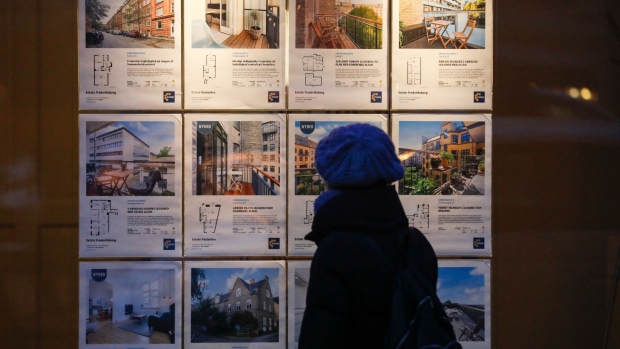(Bloomberg) -- Denmark risks a housing boom-to-bust cycle reminiscent of the one it experienced after the financial crisis of 2008, unless the government steps in to limit borrowing, according to the governor of the central bank, Lars Rohde.
After almost a decade of negative interest rates in Denmark -- a world record -- the country’s housing market now appears to have reached a tipping point, Rohde said in an interview on Wednesday. He’s recommending that the government step in to tighten mortgage terms, but the minister in charge of financial legislation has signaled he’s reluctant to act.
Denmark, which uses monetary policy to keep the krone pegged to the euro, first resorted to negative central bank rates in 2012. Economists now warn that the next step is more likely to be a cut than a hike amid demand for krone-denominated assets. Meanwhile, cheap mortgages have fueled a housing boom, with prices up about 15% from a year ago.
“This development is only going to get stronger going forward,” Rohde said. The risk, ultimately, is that “this can lead to some sort of self-feeding speculative bubble, and that kind of thing tends to burst at some point. That can have pretty unpleasant long-term consequences, like the ones we saw after the financial crisis.”
After the 2008 crisis, Denmark’s housing market plunged more than 20% from peak to trough. Asked whether the country might be facing a similar trajectory now, Rohde said, “yes.”
The concern is that “a number of credit-constrained homeowners would find themselves in technical insolvency,” he said. “We know from the financial crisis, which we’ve analyzed, that households reduce their spending quite considerably, which has indirect macroeconomic effects that lead to a downturn. Experience also suggests it takes a long time to recover.”
The central bank this week called on the government to restrict access to interest-only loans. But Business Minister Simon Kollerup has made clear he’s reluctant to take any steps that would make it harder for people to own a home. Meanwhile, Rohde has warned that the so-called counter-cyclical buffer that banks use to guard against losses should be raised as high as 2%, versus zero today.
Banks in Denmark started passing negative rates on to retail clients in 2019. Initially, only the richest customers were forced to share the burden, but in the meantime, the threshold has been dropped to surplus deposits as low as 100,000 kroner, or roughly $16,000. Now, a larger share of Danish retail deposits is exposed to negative rates than in any other country.
Rohde says the development appears to be adding a layer of stimulus the economy, and inflating asset prices. But he also says there’s so far not enough data available to allow an in-depth analysis.
©2021 Bloomberg L.P.



